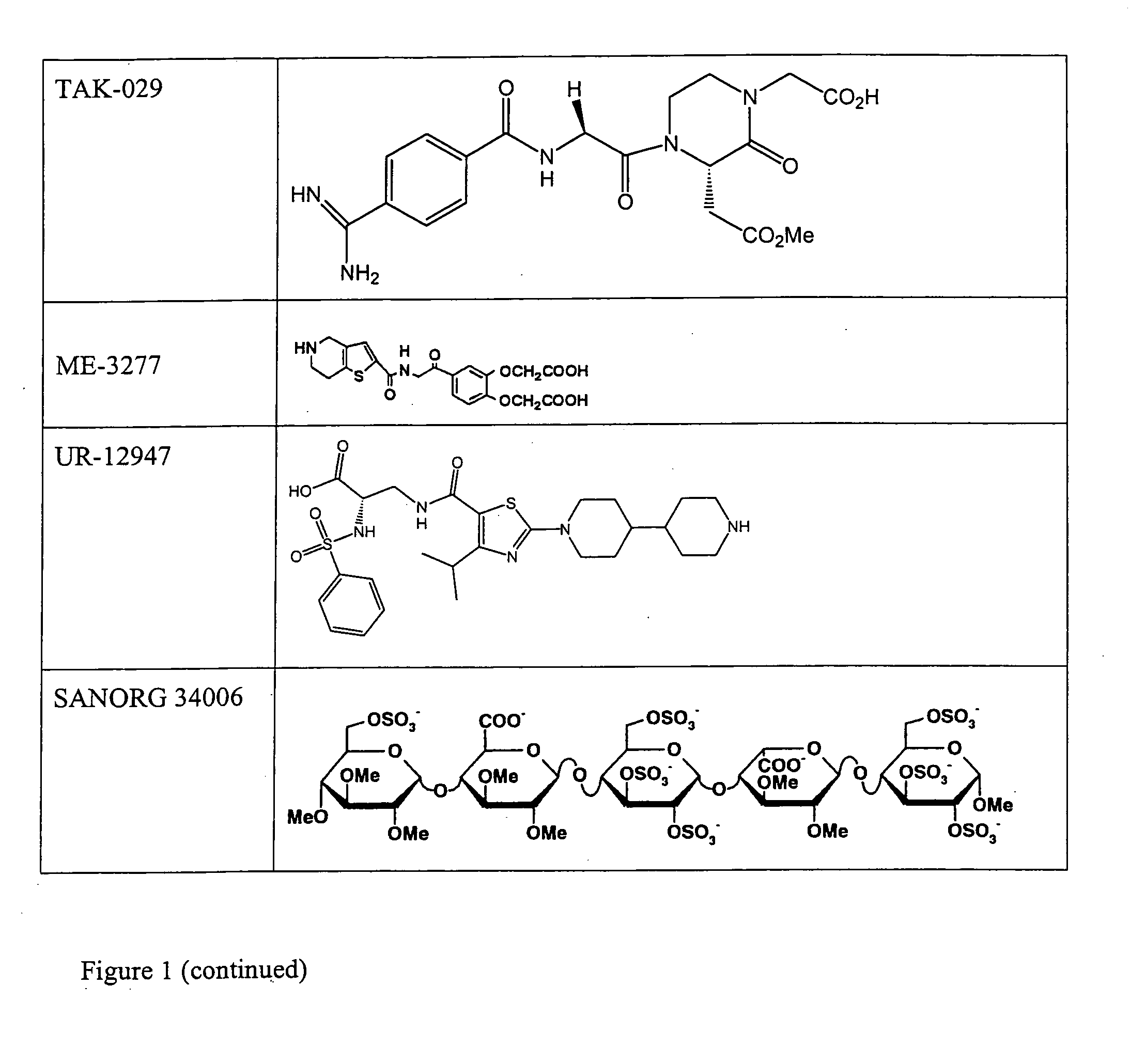Combination therapy for inhibition of platelet aggregation
a technology of conjugated therapy and platelet aggregation, which is applied in the field of medical treatments, can solve the problems of platelet aggregation and thrombosis in vital organs, and achieve the effects of reducing the cost of initial dosing, reducing the risk of infection, and reducing the cost of continued dosing
- Summary
- Abstract
- Description
- Claims
- Application Information
AI Technical Summary
Benefits of technology
Problems solved by technology
Method used
Image
Examples
example 1
[0051] A patient is admitted to a hospital to undergo a cardiac interventional, e.g., percutaneous transluminal coronary angioplasty, a percutaneous coronary intervention, a coronary artery stent procedure, coronary artery bypass surgery, peripheral transluminal angioplasty, peripheral vascular stent implantation, or an angioplasty procedure. Thirty minutes prior to the initiation of the procedure, the patient is administered an intravenous bolus loading dose of 1 to 10 mg of xemilofiban, e.g., 3 to 6 mg of xemilofiban, with the actual amount administered being adjusted according to the body mass index of the individual patient and according to the amount of platelet inhibition desired, e.g., greater than 80, 85, or 90 percent inhibition of platelet aggregation. Following completion of the procedure, the patient is administered oral xemilofiban 10 to 40 mg four times daily (QID) for two days, with the dosage being adjusted to maintain plasma concentrations of 0.3 to 3000 ng / ml, e.g....
example 2
[0052] A patient is admitted to a hospital to undergo a cardiac interventional procedure consisting of percutaneous transluminal coronary angioplasty, a percutaneous coronary intervention, a coronary artery stent procedure, coronary artery bypass surgery, peripheral transluminal angioplasty, peripheral vascular stent implantation, or an angioplasty procedure. Thirty minutes prior to the initiation of the procedure, the patient is administered a subcutaneous bolus loading dose of 0.1 to 50 mg of xemilofiban, e.g., 1 to 10 mg of xemilofiban or 3 to 6 mg of xemilofiban, with the actual amount administered being adjusted according to the body mass index of the individual patient and according to the amount of platelet inhibition desired, e.g., greater than 80, 85, or 90 percent inhibition of platelet aggregation. Following completion of the procedure, the patient is administered oral xemilofiban 10 to 40 mg four times daily (QID) for two days, with the dosage being adjusted to maintain ...
example 3
[0053] A patient is admitted to a hospital to undergo a cardiac interventional procedure consisting of percutaneous transluminal coronary angioplasty, a percutaneous coronary intervention, a coronary artery stent procedure, coronary artery bypass surgery, peripheral transluminal angioplasty, peripheral vascular stent implantation, or an angioplasty procedure. Thirty minutes prior to the initiation of the procedure, the patient is administered a transdermal dose of 0.1 to 50 mg of xemilofiban, e.g., 1 to 10 mg or 3 to 6 mg of xemilofiban, with the actual amount administered being adjusted according to the body mass index of the individual patient and according to the amount of platelet inhibition desired, e.g., greater than 80, 85, or 90 percent inhibition of platelet aggregation. Following completion of the procedure, the patient is administered oral xemilofiban 10 to 40 mg four times daily (QID) for two days with the dosage being adjusted to maintain plasma concentrations of 0.3 to...
PUM
| Property | Measurement | Unit |
|---|---|---|
| body mass index | aaaaa | aaaaa |
| body mass index | aaaaa | aaaaa |
| body mass index | aaaaa | aaaaa |
Abstract
Description
Claims
Application Information
 Login to View More
Login to View More - R&D
- Intellectual Property
- Life Sciences
- Materials
- Tech Scout
- Unparalleled Data Quality
- Higher Quality Content
- 60% Fewer Hallucinations
Browse by: Latest US Patents, China's latest patents, Technical Efficacy Thesaurus, Application Domain, Technology Topic, Popular Technical Reports.
© 2025 PatSnap. All rights reserved.Legal|Privacy policy|Modern Slavery Act Transparency Statement|Sitemap|About US| Contact US: help@patsnap.com


